1. Picture Book Reading by Caregivers and Children
Picture book reading is linked to the development of language and reading ability. Research also indicates that reading picture books influences learning in school. Therefore, it is recommended to start reading picture books to children in their infancy. Bookstart was launched in 1992 in Birmingham, U.K. where the mother tongue of a lot of immigrant children is not English. The purpose of Bookstart was to alleviate academic disparity caused by differing literacy rates due to various social stratifications and home environments. This movement to distribute picture books with the message "share books with your baby" spread throughout the world. Japan became the second country to incorporate this movement in 2001 as one of the Children's Reading Year activities. The library staff of a municipality or volunteers began giving the gift of enjoyable shared reading "experience" during regular health check-ups for children under a year old. In February 2019, 1038 municipalities (59.6 %) out of 1741 in Japan were conducting it. Tadashi Matsui, the president of the NPO Bookstart, states: "Bookstart is a charity to deliver language and love to mothers and babies. Picture books contain a wealth of words. The illustrations which babies see in books lead on to words, and mothers who see the same illustrations interpret pictures and various words in sentences and talk freely to the babies." Picture books are akin to vitamins in the development of children. They are also are effective in strengthening bonding between mothers and children.
The setting of picture book reading is built on three elements: caregivers, children and books. When a child is between nine months to a year old, binary relations such as adults-children or children-objects change and a triadic type of behavior appears. In this circumstance, there are children, adults and objects or situations to which attract the attention of both adults and children. When a child is about a year old, s/he also becomes capable of joint engagement to socially interact with adults through certain objects for a relatively long time. This joint attention to share a common focus on an object with others is essential for the foundation of language acquisition. Baldwin (1993) conducted an experiment to show two new toys to children. One of the toys was given to the child, and the other was held in the experimenter's palm. While the child played with the provided toy, the experimenter gazed at the toy held in his/her palm for four seconds and labelled it "Peri." Children over eighteen months old instantly checked what the experimenter was looking at when they heard the new label "Peri." They were also able to select the toy which the experimenter was looking at, not the toy in their hands when they were told to look for "Peri." This result suggests that children over eighteen months old are able to predict the meaning of "Peri." By establishing joint attention, they become capable of understanding the intention of others and speculation of the meaning. Picture book reading is a setting where joint engagement with adults occurs, and supports the foundation of language acquisition. This shared triad previously mentioned provides a perfect opportunity to learn word-object mapping in a structured setting where social interaction with each other, pointing gestures, joint attention and verbal labeling arise. (Farrant & Zubrik, 2011).
It is reported that language development for the first three years from birth is affected by the experience of parent-child picture book reading. In certain cultural and socio-economic stratifications, parents start reading books to children before they are one year old. It is noted that the earlier one starts reading picture books, the more effective the language development (DeBaryshe, 1993; Payne et al., 1994). Marjanovič-Umek, Fekonja-Peklaj, & Sočan (2017) reported that the frequency of picture book reading during a week with one year and seven months old children is mediated by the education of parents, and predicts the amount of vocabulary and grammar development of children when they reach two years and seven months old.
Fletcher & Reese (2005) propose an overview of the factors that influence the quality of picture book reading in each of the three elements of parent, child and book, and their triadic relations in a setting of shared reading (Figure 1).
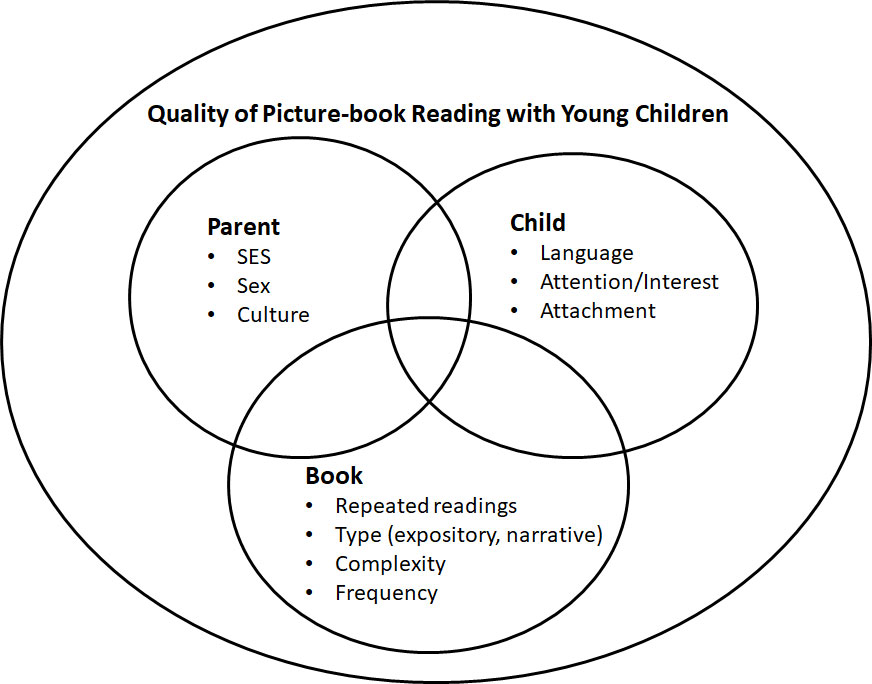
Figure 1 portrays the children's-side factors that influence shared reading as "language," "attention/interest" and "attachment." The next section introduces research by the authors (Ogura, Higuchi and Masuda, 2018) who extracted "attention" and "language" among them.
2.Joint Attention at Mother-Child Picture Book Reading, and Children's Communication and Language Development
This research examines the duration in which mothers and children focus on picture books and the frequency of change of attention as an index in relation to children's communication and language development.
Observation was conducted and questionnaires were filled on 142 pairs (75 boys, 67 girls) of mothers and children. In total, there were 38 aged nine months, 30 aged twelve months, 28 aged eighteen months, 19 aged twenty-one months and 27 aged twenty-four months. Among them, follow-up questionnaires were carried out for 72 pairs of nine, twelve and eighteen months old when they reached twenty-four months old; 98 pairs of nine, twelve, eighteen, twenty-one, and twenty-four months old when they reached thirty-three months old.
The children that were being observed were asked to read three designated picture books. Do Sureba Iinokana (How do I put it on?), Buruna to Dobutsu (Bruna and the Animals), and Buruna no Kore Nani? (Bruna's What Is This?) for five minutes, which was videotaped from two different directions. In this study, joint attention applied to the situation where the mother and child focused on the book. The frequency of the mother and child in joint attention (frequency of mother and child simultaneously looking at the book or looking away from the book), the average duration in joint attention (in seconds), the maximum duration in joint attention (in seconds), and the total duration in joint attention (in seconds) were measured by a behavior coding system, (DKH coding system Beco2). For analytic reliability, there were two analysts for the mother and child joint attention index, and two raters measured a total of 26 children from each age group, approximately 18 % of all children. The results were the correlation of 0.927 for frequency, 0.982 for maximum duration in joint attention, 0.935 for average duration in joint attention and 0.996 for total duration in joint attention.
The Japanese MacArthur Communicative Development Inventory: Words and Gesture (Ogura & Watamaki, 2004) was applied to nine, twelve, and eighteen months old. The Japanese MacArthur Communicative Development Inventory: Words and Grammar (Watamaki & Ogura, 2004) was applied to twenty-one and twenty-four months old on observation; to twenty-four months and thirty-three months old on follow-up. Mothers were asked to complete the questionnaire.
Mother and Child Joint Attention in a Setting of Picture Book ReadingTable 1 indicates the Mean and SD of frequency and duration (in seconds) in joint attention of mothers and children at different ages.
When analysis of variance using the two factors of age and gender was conducted for the frequency, maximum duration, average duration and total duration in joint attention between the mother and child, a significant difference in frequency among different ages was observed. However, multiple comparison among ages showed no significant difference. The frequency among girls was significantly higher than among boys. Interaction between age and gender was not significant. There was a significant difference among ages for each duration in joint attention. Multiple comparison revealed that the maximum duration for twenty-one months old was significantly higher than that for nine, twelve and eighteen months old; the total duration was significantly higher for twenty-one months old than that for nine, twelve and eighteen months old; that for twenty-four months old was significantly higher than that for twelve months old. The average duration for twenty-one months old was also significantly higher than that for nine and eighteen months old; that for twenty-four months old was significantly higher than for nine months old. Maximum, average and total duration in joint attention increased notably for children older than twenty-one months.
Children older than twenty-one months displayed a significantly longer duration in joint attention (maximum, average and total) than those of a younger age. It indicated that children older than twenty-one months old become increasingly capable of focusing on picture books.
Language Development of ChildrenThe number of productive words at the time of observation increased with age (Figure 2): analysis of variance with one factor resulted in a significant difference between twenty-one months old and the groups of nine, twelve, and eighteen months old. Children twenty-one months old had significantly more vocabulary size compared to younger ones.
With regard to the correlation of the productive words at the time of observation and follow-up, there was no correlation between the groups of nine and twelve month old children at the time of observation, and the groups of twenty-four and thirty-three months old at the time of follow-up. However, there was a significant correlation between eighteen months old at the time of observation and twenty-four months old at the time of follow-up. A significant correlation also occurred between twenty-one and twenty-four months old at the time of observation, and thirty-three months old at the time of follow-up. The amount of vocabulary acquired by nine and twelve months old children when meaningful words first appear, did not predict the future amount.
Joint Attention Index at the Time of Observation and Communication and Language DevelopmentThere was a significant positive correlation between maximum, average and total duration in joint attention and the JCDI's score for comprehension of common phrases as well as for the production of gestures at eighteen months old at the time of observation (Table 2). There was a significant positive correlation among frequency, total duration in joint attention and the number of words understood. Among other ages, there was no correlation between joint attention measurement and the JCDI's communication and language scores. This indicated that children at eighteen months old at the time of observation who had a better understanding of vocabulary and higher communication abilities had spent more time on mother and child shared reading.
Mother and Child Joint Attention and Language Development of Twenty-Four Months Old and Thirty-Three Months Old at the Time of Follow-up
Partial correlation was calculated between the joint attention index and productive words at 24 months and 33 months on follow-up after controlling for children's initial lexicons. As a result, there was a significant positive partial correlation (r = 0.542, p <05) between the frequency in joint attention of eighteen months old and the productive words of those twenty-four months old on follow-up. Frequency means that the children's eyes avert from the situation where mother and child share the picture book. Moving the eyes away from the picture book means switching attention to other objects and can be interpreted as showing curiosity. The maximum duration in joint attention of those twenty-one months old negatively predicted the number of productive words of those thirty-three months old on follow-up. The research result suggested that matching objects in picture books with those existing in the room, transition of attention to other picture books and curiosity drives vocabulary development more in the future for those eighteen and twenty-one months old than simply looking at picture books. It demonstrated that for mother and child to keep looking at picture books for a long period of time is not the only effective way to develop language. More detailed study in the future should be considered on verbal and non-verbal interaction between mother and child during their joint attention and non-joint attention, and the relation between joint attention and children's temperament.
3. Conclusion
Picture books should not be regarded as an important tool for early elite education (for children to aim for top universities). As Matsui (2018) puts it, the most important meaning and role of picture books reside in both the "reader" and "listener" "sharing" the joy of language. The illustrations are images representing words and help readers understand them. It gives an opportunity to learn new vocabulary. As I write this paper, I recall reading children's picture books such as Chiisai Ouchi (The Little House), Chibikuro Sanbo (The Story of Little Black Sambo), Suzanna no Oningyo (The Little Wooden Doll) and Fushigina Taiko (Mysterious Drum) as a child with my mother.
References:
- Baldwin, D. A. (1993). Infant's ability to consult the speaker for clues to word reference. Journal of Child Language, 20, 395-418.
- DeBaryshe, B. D. (1993). Joint picture book reading correlates of early oral language skill. Journal of Child Language, 20, 455-461.
- Farrant, B. M., & Zubrick, S. R. (2011). Early vocabulary development: The importance of joint attention and parent-child book reading. First Language, 32, 343-364.
- Fletcher, K. L., & Reese, E. (2005). Picture book reading with young children: A conceptual framework. Developmental Review, 25, 64-103.
- Marjanovič- Umek, L., Fekonja-Peklaj, U., & Sočan, G. (2017). Early vocabulary, parental education, and the frequency of shared reading as predictors of toddler's vocabulary and grammar at age 2;7: a Slovenian longitudinal CDI study. Journal of Child Language, 44, 457-479.
- Matsui, T. (2018). Ehon wa Kokoro no Heso no O [Picture Books are the Umbilical Cord to Your Heart], NPO Bookstart, Bookstart Japan. (March 7, 2019).
- Ogura, T., Higuchi, M., & Masuda, T. (2018). Ehon Bamen ni Okeru Boshi Kyodo Chushi to Kodomo no Gengo Hattatsu. [Joint attention between mother and child in book reading, and children's language development]. The Fifteenth Conference of the Japanese Society of Child Science. (The Japanese Society of Child Science Academic Conference). Poster presentation. Doshisha Women's College of Liberal Arts.
- Ogura, T., & Watamaki, T. (2004). Technical Manual of the Japanese MacArthur Communicative Development Inventory: Words and Gesture. Kyoto International Social Welfare Exchange Centre.
- Tajima, N., Sasaki, T., Miyashita, T., & Akita, K. (Authors & Editors). (2018). Uta to Ehon ga Hagukumu Kodomo no Yutakana Kokoro---Utaikake/Yomikikase Kosodate no Susume---[Songs and picture books enrich children's hearts---Encouragement of singing and reading in childrearing]. Minerva Shobo.
- Payne, A.C., Whitehurst, G.J., & Angell, A.L. (1994). The role of home literacy environment in the development of language ability in preschool children from low-income families. Early Childhood Research Quarterly, 9, 427-440.
- Watamaki, T., & Ogura, T. (2004). Technical Manual of the Japanese MacArthur Communicative Development Inventory: Words and Grammar. Kyoto International Social Welfare Exchange Centre.



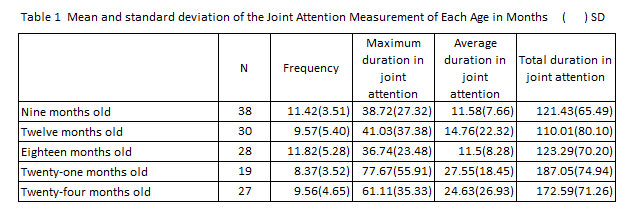
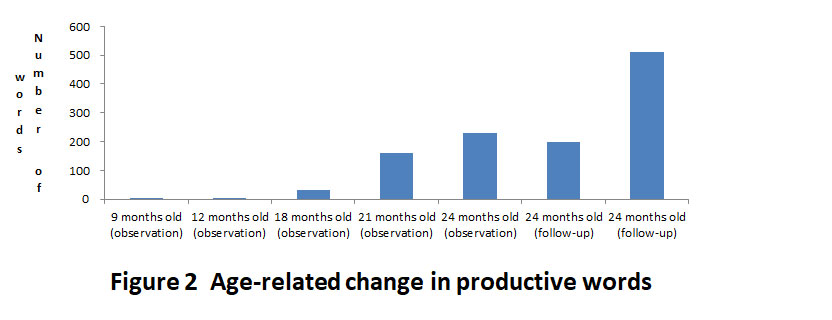
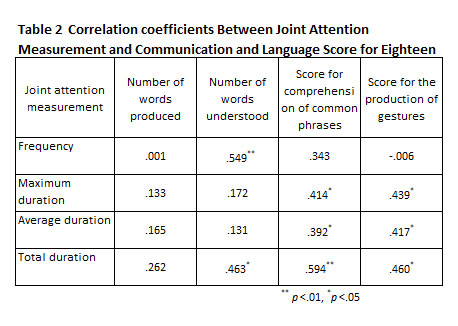
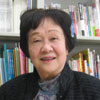 Tamiko Ogura
Tamiko Ogura 










